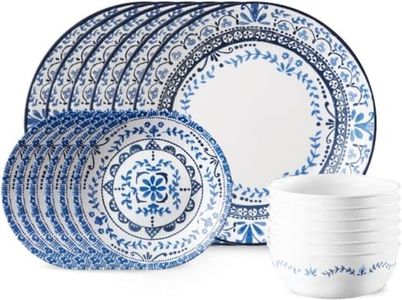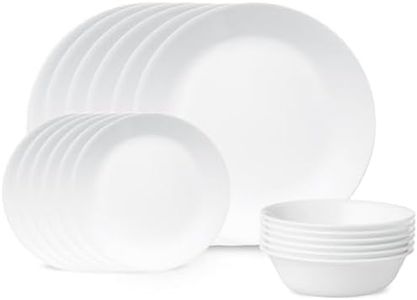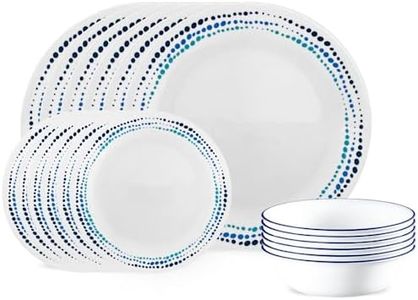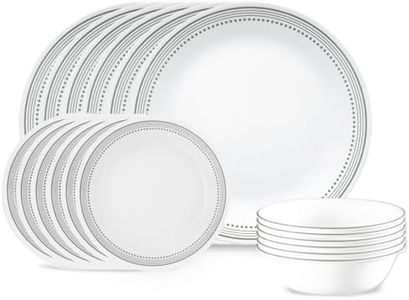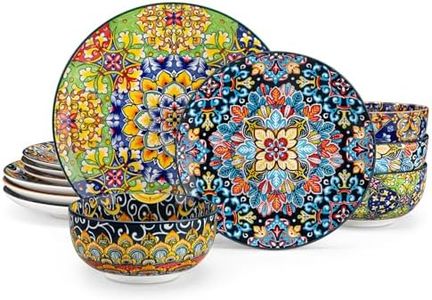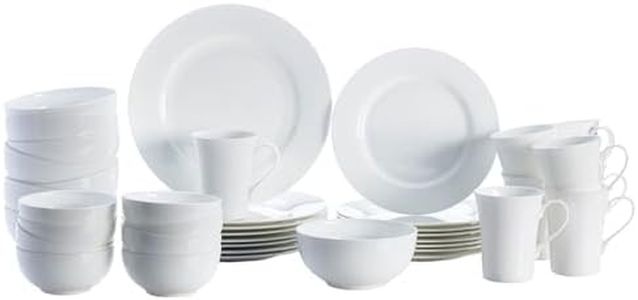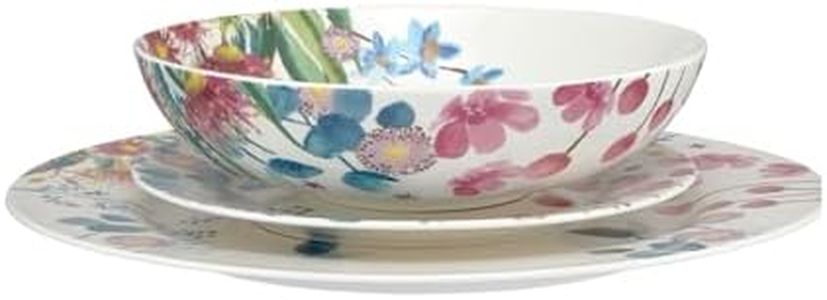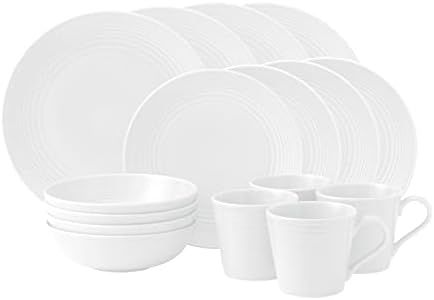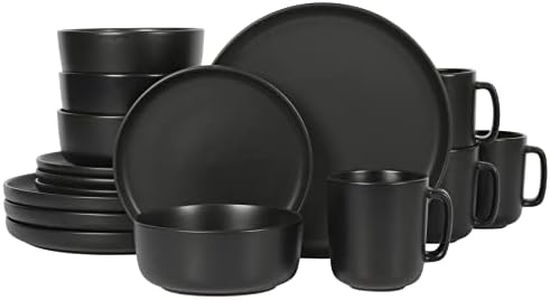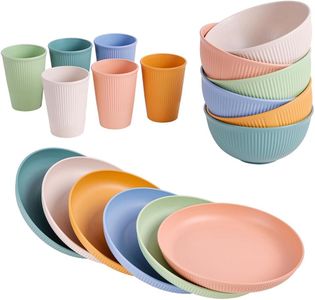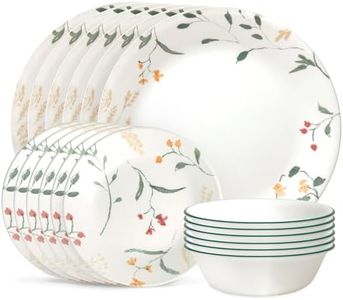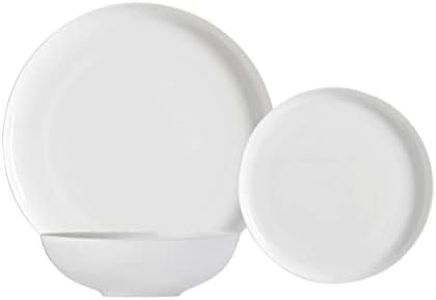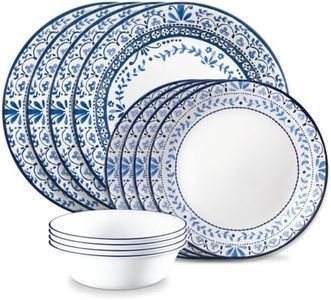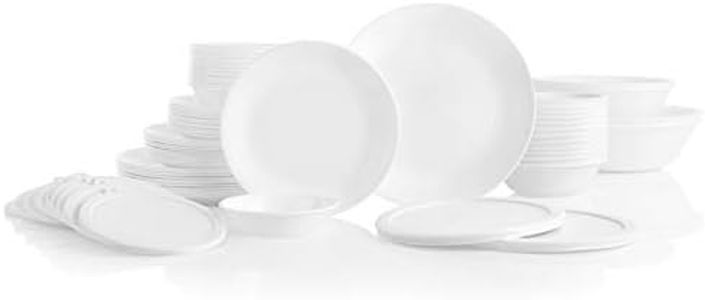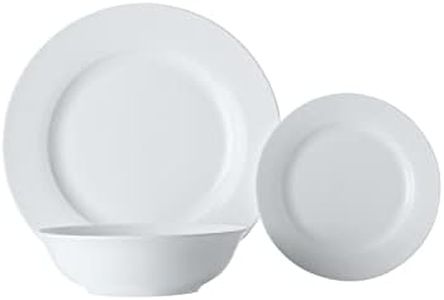We Use CookiesWe use cookies to enhance the security, performance,
functionality and for analytical and promotional activities. By continuing to browse this site you
are agreeing to our privacy policy
10 Best Non Toxic Dinnerware
From leading brands and best sellers available on the web.Buying Guide for the Best Non Toxic Dinnerware
Choosing non-toxic dinnerware is a smart move for both your health and the environment. When shopping for dinnerware, you'll want to consider materials and certifications that assure you're not introducing unwanted chemicals into your food. Focus on quality over trends and always think about how you’ll use your dinnerware—daily family meals, occasional entertaining, or for the kids. Understanding a few key specifications will help you make an informed, safe, and practical choice.Material CompositionMaterial composition means what your dinnerware is made of: common safe options include porcelain, bone china, stoneware, tempered glass, and certain types of stainless steel. Why does this matter? Some materials can leach harmful substances like lead, cadmium, or BPA into your food, especially when exposed to heat or acidic dishes. Porcelain, bone china, and glass are widely considered very safe if they’re certified lead and cadmium free. Stoneware is also a solid choice if it’s properly glazed. When reviewing options, steer clear of plastic if you want to minimize risk, and check that any decorative glazes are marked as food-safe. For everyday use and maximum peace of mind, go for materials with a reputation for non-reactivity and safety.
Certification and Safety StandardsA certification or label indicating compliance with safety standards is an official promise that your dinnerware doesn’t contain dangerous levels of substances like lead or cadmium. Look for certifications from recognized agencies such as FDA (United States), LFGB (Europe), or labels specifying 'lead-free' and 'cadmium-free.' Some pieces will also mention they meet California Prop 65 standards, which are quite strict. For peace of mind, don’t hesitate to ask the seller for proof or documentation if a product’s safety isn’t clear. If you plan to use the plates for both hot and cold foods frequently, this is especially important.
Glaze and DecorSome dinnerware is coated with a decorative glaze or paint, which can be beautiful but may pose risks if the glaze contains heavy metals. The importance here is that poorly formulated or non-food-safe glazes can leach chemicals over time, especially when scratched or heated. Plain, unglazed portion—especially on eating surfaces—tends to be safest. If you appreciate colorful, decorative dinnerware, make sure the manufacturer clearly marks their glaze as non-toxic and food-safe, and avoid items where decorative elements are on surfaces that touch food.
Microwave and Dishwasher SafetyThis spec tells you whether a piece can go in the microwave or dishwasher without degrading or leaching. If dinnerware isn’t labeled microwave-safe or dishwasher-safe, it could break, warp, or release chemicals under high temperatures. Generally, porcelain, glass, and most stoneware are reliable here—so long as they’re labeled properly. If you rely on these appliances for convenience or frequent meal prep, prioritize pieces that are certified for both uses.
Durability and Scratch ResistanceDurability and scratch resistance mean how well your dinnerware handles daily use, stacking, utensil marks, and knocks. Important because scratches or cracks can harbor bacteria or expose glazes underneath, potentially leading to leaching. Tempered glass and high-fired ceramics are usually very durable; softer ceramics or those with intricate designs might be more prone to wear. If you have children, or expect heavy daily use, look for dinnerware that’s advertised as chip and scratch-resistant.
Weight and FeelWeight refers to how heavy the dinnerware feels to hold and use, while feel relates to the tactile comfort—edges, texture, and how easy things are to grip. For families with young children or elderly members, lighter pieces are typically easier to manage safely. Heavier options may feel more substantial and stable but may be awkward to handle, especially with large sets. Pick what feels best in your hand, considering who will use the dinnerware most often.
